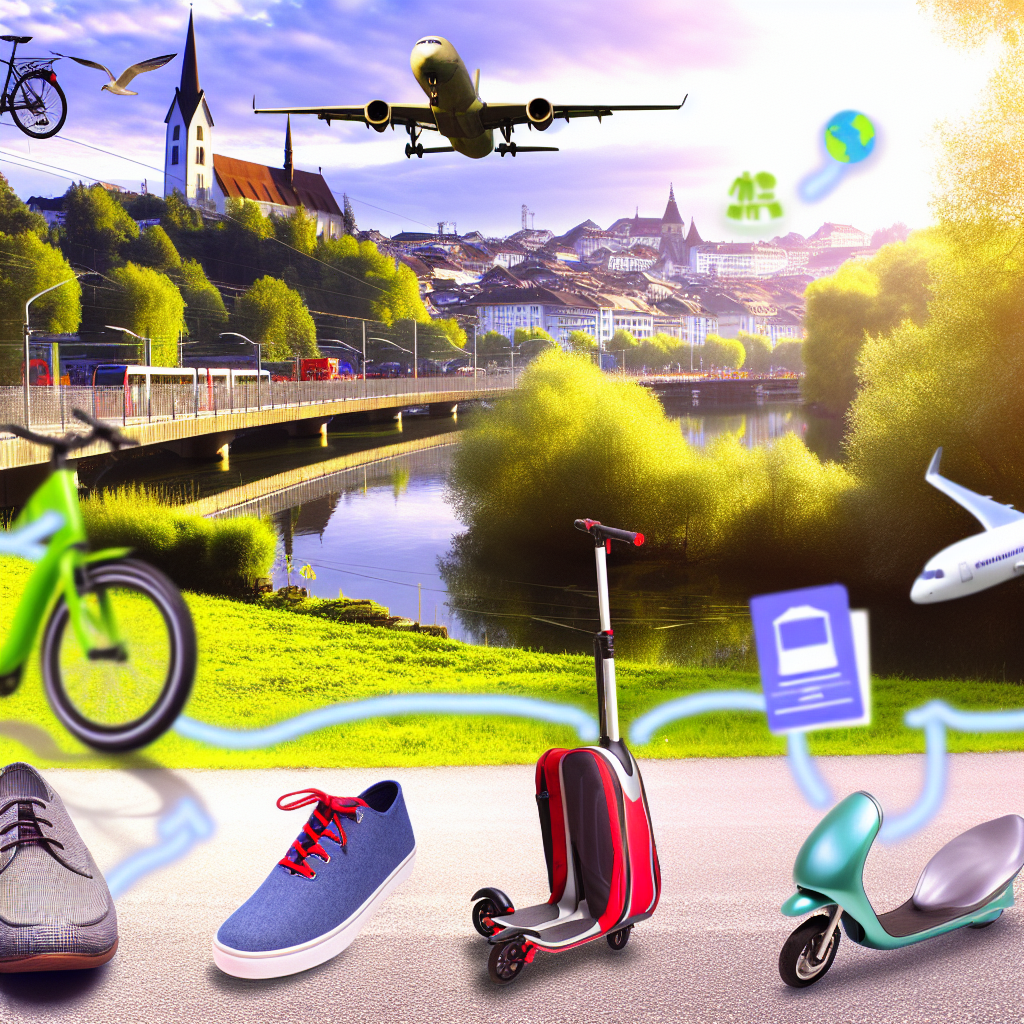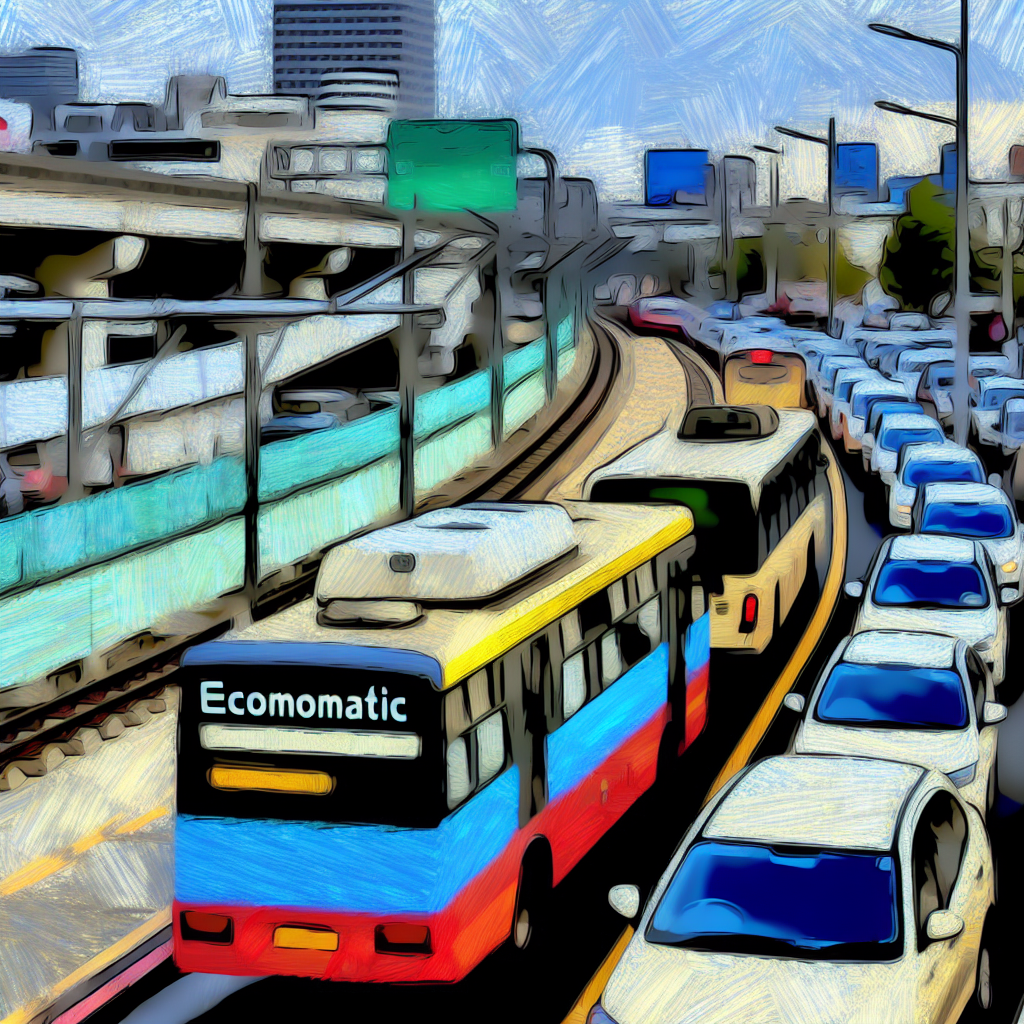-
Table of Contents
Step by Step: The Ultimate Guide to Budget-Friendly Travel on Foot
Traveling on a budget doesn’t mean you have to sacrifice comfort or miss out on exciting experiences. In fact, it can be an opportunity to explore a destination in a unique and immersive way. One of the best ways to do this is by traveling on foot. Walking allows you to truly soak in the sights, sounds, and smells of a place, and it also helps you save money on transportation costs. In this article, we will guide you through the steps of budget-friendly travel on foot, so you can make the most of your next adventure.
Step 1: Plan your route
Before setting off on your journey, it’s important to plan your route. Research the main attractions and landmarks you want to visit and map out a walking itinerary. Consider the distance between each location and estimate how long it will take you to walk between them. This will help you gauge how much time you need to allocate for each activity and ensure you don’t miss out on anything.
Step 2: Pack light
When traveling on foot, it’s crucial to pack light. Carrying heavy luggage can quickly become a burden and hinder your ability to explore comfortably. Opt for a lightweight backpack or a small rolling suitcase that you can easily maneuver. Pack only the essentials, such as a change of clothes, toiletries, and any necessary electronics. Remember, you can always do laundry or buy items you need along the way.
Step 3: Dress comfortably
Comfortable footwear is essential for walking long distances. Invest in a good pair of walking shoes that provide support and cushioning. Avoid wearing new shoes that haven’t been broken in, as they can cause blisters and discomfort. Additionally, dress in layers to accommodate changing weather conditions. This will ensure you stay comfortable throughout your journey.
Step 4: Stay hydrated and nourished
Walking for extended periods can be physically demanding, so it’s important to stay hydrated and nourished. Carry a reusable water bottle and refill it whenever you have the chance. Pack snacks like energy bars, nuts, or fruits to keep your energy levels up. Additionally, take breaks at local cafes or restaurants to enjoy a meal and rest your feet.
Step 5: Take advantage of free attractions
One of the advantages of traveling on foot is the ability to stumble upon hidden gems and free attractions. Explore local parks, gardens, and markets that offer a glimpse into the culture and lifestyle of the destination. Take advantage of free walking tours or guided hikes that provide valuable insights and local knowledge. By immersing yourself in the local scene, you’ll have a richer and more authentic travel experience.
Step 6: Use public transportation strategically
While the focus of this guide is budget-friendly travel on foot, it’s important to acknowledge that walking may not always be feasible or practical for long distances. In such cases, use public transportation strategically. Research the local bus or train routes and identify the most cost-effective options. Consider purchasing day passes or travel cards that offer unlimited rides within a certain timeframe. By combining walking with public transportation, you can cover more ground without breaking the bank.
In conclusion, budget-friendly travel on foot is a fantastic way to explore a destination while saving money on transportation costs. By planning your route, packing light, dressing comfortably, staying hydrated, and taking advantage of free attractions, you can have an unforgettable adventure on a shoestring budget. Remember to use public transportation strategically when necessary, and most importantly, enjoy the journey and embrace the freedom that comes with traveling on foot.
Exploring on a Budget: Unleashing the Benefits of Biking for Travel
Traveling on a budget doesn’t mean you have to sacrifice exploring new places and experiencing different cultures. In fact, it can be an opportunity to discover unique ways to get around and truly immerse yourself in the local environment. One of the most budget-friendly and eco-friendly modes of transportation is biking. Whether you’re exploring a bustling city or a serene countryside, biking can offer a whole new perspective on your travel experience.
One of the major advantages of biking is its affordability. Unlike renting a car or taking public transportation, biking is often free or comes at a minimal cost. Many cities around the world have bike-sharing programs that allow you to rent a bike for a short period of time, usually for a small fee. This is a great option for travelers who want to explore a city at their own pace without breaking the bank. Additionally, biking allows you to save money on fuel and parking fees, which can quickly add up when you’re traveling on a tight budget.
Aside from being budget-friendly, biking also offers numerous health benefits. It’s a great way to stay active and fit while on the road. Instead of spending hours sitting in a car or on a bus, biking allows you to get some exercise and enjoy the fresh air. It’s a fantastic way to explore a new destination while staying healthy and energized. Plus, biking is a low-impact exercise that is suitable for people of all ages and fitness levels.
Another advantage of biking is the freedom and flexibility it provides. When you’re on a bike, you have the ability to go wherever you want, whenever you want. You’re not bound by bus schedules or restricted to certain routes. Biking allows you to take detours, explore hidden gems, and stumble upon unexpected adventures. It’s a liberating feeling to be in control of your own transportation and to have the freedom to go off the beaten path.
Biking also allows you to connect with the local community in a way that other modes of transportation simply can’t. As you pedal through the streets, you’ll have the opportunity to interact with locals, observe their daily lives, and experience the culture firsthand. You can stop at local markets, cafes, and parks, and truly immerse yourself in the local atmosphere. Biking allows you to slow down and appreciate the small details that you might miss when you’re rushing from one tourist attraction to another.
Of course, before you embark on a biking adventure, it’s important to prioritize safety. Always wear a helmet, follow traffic rules, and be aware of your surroundings. It’s also a good idea to familiarize yourself with the local biking laws and regulations. Some cities have designated bike lanes, while others may require you to share the road with cars and pedestrians. By being cautious and respectful of others, you can ensure a safe and enjoyable biking experience.
In conclusion, biking is a fantastic way to explore a new destination while staying on a budget. It’s affordable, healthy, and offers a unique perspective on your travel experience. Whether you’re navigating the bustling streets of a city or pedaling through picturesque countryside, biking allows you to connect with the local community, discover hidden gems, and create unforgettable memories. So next time you’re planning a trip, consider ditching the car or bus and hop on a bike instead. You won’t regret it!
Maximizing Savings: How to Cut Travel Expenses with Rideshares
Traveling can be an exciting and enriching experience, but it can also be quite expensive. From flights and accommodations to meals and activities, the costs can quickly add up. However, there are ways to cut down on expenses, particularly when it comes to transportation. By utilizing rideshares, bikes, and your own two feet, you can significantly reduce your travel costs and maximize your savings.
Rideshares have become increasingly popular in recent years, and for good reason. Services like Uber and Lyft offer a convenient and cost-effective alternative to traditional taxis. Not only are rideshares often cheaper than taxis, but they also provide a more personalized and comfortable experience. Plus, with the ability to split fares with fellow travelers, you can further reduce your transportation expenses.
To make the most of rideshares, it’s important to plan ahead. Research the availability and pricing of rideshares in your destination before you arrive. This will give you an idea of what to expect and allow you to budget accordingly. Additionally, consider using rideshares during off-peak hours when prices are typically lower. By being flexible with your travel schedule, you can save even more money.
Another budget-friendly transportation option is biking. Many cities around the world have implemented bike-sharing programs, allowing visitors to rent bicycles for a short period of time. Not only is biking a fun and eco-friendly way to get around, but it’s also incredibly affordable. Most bike-sharing programs charge a small fee for a day or even a week of unlimited rides. This can be a great option for exploring a city at your own pace while keeping your transportation costs to a minimum.
Before hopping on a bike, familiarize yourself with the local biking rules and regulations. Some cities have designated bike lanes, while others require cyclists to share the road with cars. It’s important to prioritize safety and wear a helmet, especially if you’re not accustomed to biking in a busy urban environment. Additionally, be mindful of any bike theft concerns and always lock up your bike when not in use.
Of course, one of the simplest and most cost-effective ways to get around is by using your own two feet. Walking allows you to fully immerse yourself in a destination, taking in the sights and sounds at a leisurely pace. It’s also a great way to stumble upon hidden gems and discover local neighborhoods that you may have otherwise missed. Plus, walking is free and requires no additional planning or equipment.
When walking, it’s important to have a comfortable pair of shoes and a map or navigation app to guide you. Familiarize yourself with the layout of the city and plan your routes accordingly. Consider walking shorter distances or using public transportation for longer journeys. By combining walking with other modes of transportation, you can strike a balance between convenience and cost-effectiveness.
In conclusion, reducing transportation costs while traveling is possible with the help of rideshares, bikes, and your own two feet. By planning ahead, utilizing rideshares during off-peak hours, and taking advantage of bike-sharing programs, you can significantly cut down on your travel expenses. Additionally, walking allows you to fully immerse yourself in a destination while keeping your transportation costs to a minimum. So, the next time you’re planning a trip, consider these budget-friendly options and maximize your savings.






